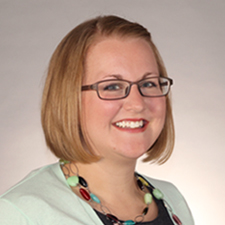New Report Finds Public School Integration Lags Integration in American Neighborhoods
Research Suggests School Choice Creates More Integration
INDIANAPOLIS (Oct. 28, 2015) – Although public school integration has improved since the end of the last century, it still lags the progress made in the neighborhoods those schools call home, according to new research from the Friedman Foundation for Educational Choice.
In The Integration Anomaly: Comparing the Effects of K–12 Education Delivery Models on Segregation in Schools, a report released today, Friedman Foundation Senior Fellow and Professor of Economics at Kennesaw State University Ben Scafidi finds that almost 20 percent of students live in metro areas where public school segregation increased from 2000 to 2010.
Although public schools became more segregated between 1980 and 2000, improvements were made between 2000 and 2010.
Yet the improvements did not keep pace with the diversity now seen in neighborhoods in the largest metropolitan areas in the country, according to Scafidi’s report.
Between 2000 and 2010, 18.4 percent of American public school students lived in metro areas where segregation in public schools increased moderately or significantly. In comparison, only 1.5 percent of students lived in neighborhoods that became moderately more segregated.
Scafidi’s research also found that there were 69 metro areas where public schools became more racially segregated between 2000 and 2010 compared to 15 metro areas that had more neighborhoods that became more segregated.
In comparison, there were 146 metro areas in the same time period that became more integrated. However, neighborhoods outpaced the schools when it came to integration. There were 198 metro areas that became more integrated from 2000 to 2010, according to Scafidi’s research.
Nobel laureate economist Milton Friedman once observed that in large urban areas, “the public school has fostered residential stratification by tying the cost of schooling to residential location.”
The report found that contrary to the suspicions of critics, school choice programs have actually improved integration in communities where they have been enacted since the early 1990s. A 2013 study by Friedman Foundation Senior Fellow Greg Forster reviewed evidence about the effect of private school choice programs in Milwaukee, Cleveland, and Washington, D.C. on racial integration where voucher programs were available for low-income pupils. Seven of eight studies found giving parents vouchers led to increased integration among students in both public and private schools. Similar results have been found in a new voucher program enacted in Louisiana.
“School choice enables parents and students to have a menu of educational options which creates diversity across a spectrum of schools,” said Robert Enlow, president and CEO of the Friedman Foundation for Educational Choice. “Whether it be public or private school choice, when a child can pick a school outside his or her neighborhood, it is likely not to be as homogeneous.”
Specialty schools that focus on themes, such as emphasizing math or science, religious or Montessori education, and other school programs different from traditional public schools, have had more success with integration as they attract students from across a wider area, Scafidi said.
Prior research has shown that segregation by income has increased significantly since 1980. Based on experiences with school choice in America and overseas, Scafidi suggests that voucher and other parental choice programs should allow schools of choice to provide diverse educational offerings so that parents will be more likely to sort their children into schools by curricular and extracurricular interests, instead of sorting by race and class as has occurred in our public education system for many decades.
Milton and Rose D. Friedman, co-founders of the Friedman Foundation and noted economists, wrote in their 1980 book Free to Choose, “Integration has been most successful when it has resulted from choice, not coercion.”
For the full report, please visit edchoice2016.wpengine.com/IntegrationAnomaly.
###
About the Friedman Foundation for Educational Choice
The Friedman Foundation for Educational Choice is a 501(c)(3) nonprofit and nonpartisan organization, solely dedicated to advancing Milton and Rose Friedman’s vision of school choice for all children. First established as the Milton and Rose D. Friedman Foundation in 1996, the Foundation promotes school choice as the most effective and equitable way to improve the quality of K-12 education in America. The Friedman Foundation is dedicated to research, education, and outreach on the vital issues and implications related to school choice.
More information contact:
Susan L. Meyers
National Media Relations Director
Friedman Foundation for Educational Choice
susan@edchoice.org 404-518-2271 (cell)




